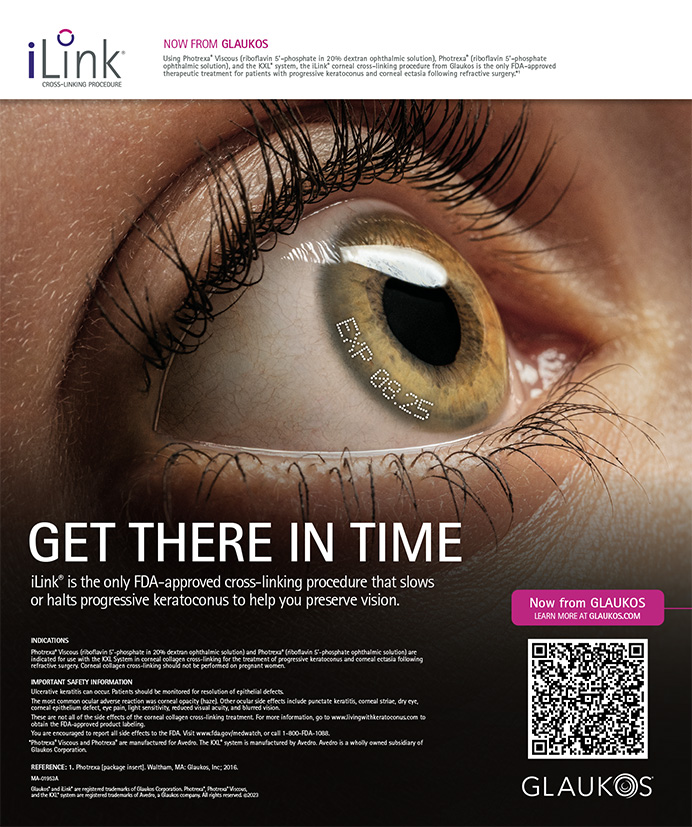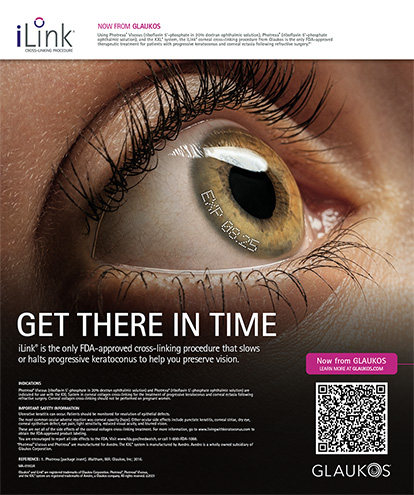Social media has cemented itself in the infrastructure of society and made serious inroads into health care. Almost 90% of physicians use at least one site for personal needs and more than 65% for professional purposes, according to “Doctors, Patients & Social Media,” a QuantiaMD report.1 Most of the big names in social media did not even exist 10 years ago, yet today, your practice probably has a presence on one or all of the usual suspects—Facebook, Twitter, and YouTube—as well as on other health care-centric sites. The relatively new picture-sharing app called Figure1 (http://figure1.com) is sometimes referred to as Instagram for physicians. Whether you tweet, post, or blog or you have a designated staffer or agency responsible for updating your followers, fans, and friends, the odds are that your practice is represented in the virtual social sphere.
SOCIAL MEDIA USE IS GROWING
Studies say that physicians' use of social media is growing, but anecdotal observations suggest that physicians are using social networking for personal purposes and employing professionals to keep their practice's online pulse pumping. Jennifer Thompson is the president of Insight Marketing Group (www.insightmarketinggroup.com) , a medical practice and health care marketing company based in Orlando, Florida. She says, “I find that there are more physicians who are not using social media than there are who are. Out of 30 surgeons [in a group that we represent], I have one who is somewhat active on social media. I got him to open a Twitter account, and he'll use it occasionally but admits that it still makes him nervous. As a group, they'll embrace social networking, but as individual physicians, it's still hard to get them to participate regularly. They're still nervous about what they can and cannot do.” She continues, “The practices we represent utilize aggressive social media tactics as part of an overall inbound marketing strategy designed to put the physician and/or office where they need to be at the moment a potential patient is looking to make an appointment. Gone are the days when practices could take a hodgepodge approach to maintaining a social media presence.”
When Premium Practice Today first covered this topic in June 2010 (http:// tinyurl.com/lx5wxlp), the question was, are physicians using social media? Today, the question is, how are physicians using social media? The QuantiaMD report referred to earlier provides some answers1:
- Facebook is the most popular medium for personal use, and online physician communities are more popular for professional use.
- Twenty-eight percent of doctors use professional online physician communities to confer, refer, and learn from experts.
- Clinicians approve and see the benefit of electronic interactions with patients to improve access and quality of care, but many are concerned about patients' privacy, liability, and compensation for these activities.
- There remains a significant need for secure and convenient forms of interactive communication tools that doctors can use to talk with each other and with patients.
- Twenty percent of clinicians use two or more social media sites for personal and professional use, and they are eager to use social media to improve health care delivery.
PHYSICIANS' GROUPS HAVE TAKEN NOTE
As the use of social media among physicians has grown, governing bodies have taken note. The American College of Physicians and the Federation of State Medical Boards (FSMB) both recommend that doctors exercise caution and restraint when talking to patients on social media. A policy paper, “Online Medical Professionalism: Patient and Public Relationships,” in the Annals of Internal Medicine2 examines and provides recommendations about the influence of social media on the patient-physician relationship, the role of these media in the public's perception of physicians' behaviors, and strategies for physicianphysician communication that preserve confidentiality while best using these technologies (http://annals.org/article.aspx?articleid=1675927). Among the recommendations listed in the Annals of Internal Medicine position paper are
- Do not “friend” or connect with patients on social media.
- Do not use text messaging for medical interactions unless you exercise extreme caution and have the patient's consent.
- If using e-mails or other electronic communications, keep them within an established patient-physician relationship and ensure patients' consent.
- If a person reaches out to a doctor through electronic means and he or she is not a patient, the physician should use his or her judgment and either encourage the person to schedule an office visit or go to the ER, whichever is more appropriate.
TAKE A CONSERVATIVE APPROACH
Refractive surgeon Cary Silverman is an active blogger and tweeter www.eyecare2020.com/blog), and he frequently contributes a column to Cataract & Refractive Surgery Today about the brave new world of electronic connectivity called “Social Eyes” (see page 84). Despite his active use of social networking, Dr. Silverman recommends that physicians take a conservative approach. “While social media is a great way to spread your message to the masses, physicians can often forget the public nature of social media,” he says. “What they say is not only out there for all to see, but it is out there forever. The [American College of Physicians and FSMB] guidelines reinforce this and are there to instill some common sense when communicating with social media." The take-away message, he stresses, is simple: "Pretend your conversation is occurring in your office and may be overheard by others in your waiting room. Say anything you wouldn't mind everyone hearing and refrain from saying what you don't want others to hear."
According to a recent survey in the Journal of the American Medical Association, 92% of all medical and osteopathic boards in the United States have encountered complaints of online physician misconduct (http://jama.jamanetwork.com/article.aspx?articleid=1105088).3 The FSMB guidelines are meant to protect physicians from unintended consequences and maintain public trust by their protecting the privacy and confidentiality of their patients; avoiding requests for online medical advice; being forthcoming about their employment, credentials, and conflicts of interest; and being aware that information they post online may be available to anyone and could be misconstrued.
The survey also reports that 56% of medical boards have restricted, suspended, or revoked at least one physician's license for online missteps. State medical boards have the authority to discipline physicians for unprofessional behavior on social networking sites including, but not limited to, inappropriate communication with patients online, use of the Internet for unprofessional behavior, online misrepresentation of credentials, online violations of patients' confidentiality, failure to reveal conflicts of interest online, and derogatory online remarks regarding a patient, among other things.
HOW ABOUT SOME COMMON SENSE?
“Here's the thing,” says Ms. Thompson. “Use common sense. You wouldn't give out medical advice over the telephone or via e-mail (and you would never let a marketing administrator give out medical advice), so don't do it online. Use the Internet to educate patients, promote your practice in the community, highlight accomplishments, and set you[rself] apart from your nearest competitor. Social media is just another tool in your toolbox for putting your practice where it needs to be when patients are looking for you. Anything beyond that and the patient needs to schedule an appointment.”
David Shaywitz, MD, PhD, agrees that physicians should err on the side of caution when engaging in social media communications. “While social media offers additional opportunities for engagement, I think physicians should be very cautious venturing into this space, as there are many potential pitfalls,” he stresses. “Doctors would do well to familiarize themselves with the medium and be sure to understand what they are getting into.” Dr. Shaywitz writes about medicine, science, strategy, innovation, and digital health for various mainstream publications, including The New York Times, The Washington Post, The Wall Street Journal, Politico Pro, and The Financial Times as well as Forbes.com (www.forbes.com) and TheAtlantic.com www.theatlantic.com).
Dr. Shaywitz says that, while most clinicians are not yet prepared to embrace social media, many are struggling to come to terms with a phenomenon they recognize as important yet viscerally troubles them. He says that, in his experience, their concerns fall into four categories, two involving patients and two involving physicians.
The two patient-centered concerns include their receiving “bad” information and their transmitting bad information. “Many physicians describe the challenges of dealing with patients who had retrieved wrong or incomplete information from the Internet,” Dr. Shaywitz says. “This turns out to be a remarkably common problem; doctors report spending a lot of time undoing bad information.” With respect to patients' transmitting bad information, he explains, physicians are challenged by patients' sharing misleading information, whether about medicine or the doctors themselves. For instance, he notes, “Despite the clear repudiation of a link between vaccines and autism, many patients continue to worry—a concern reportedly spurred on by an active Internet antivaccine community.” Also, he says, physicians fret about the ease with which disgruntled patients use the Internet to besmirch the reputation of physicians.
Dr. Shaywitz describes the physician-related challenges as “receiving information badly” and “transmitting information badly.” He points out that, while some senior physicians worry that young doctors might start to rely on tweets rather than peer-reviewed articles, a more significant concern is the impact of the Internet culture on the practice of medicine. Some worry that medical students have become progressively less reflective and that they need to be taught that traditional values are still important. The overuse of mobile devices is a concern as well. “Some attending physicians complain that rounding residents routinely look at cell phones rather than pay attention to either the patients or the senior doctors, leading at least one doctor to prohibit the use of mobile devices on rounds,” explains Dr. Shaywitz.
With respect to physicians' transmitting information badly, Dr. Shaywitz notes, “The ability afforded by social media to share information rapidly and broadly is another source of concern. Many senior physicians worry that young doctors might use social media in unprofessional ways—sharing things they shouldn't, saying things they shouldn't—potentially placing themselves and their institutions at risk.” For instance, he points out, “In some cases, even seemingly innocent activities might be deemed inappropriate. One young physician wanted to do a medically related Internet survey research project. He said that, while he could do this very easily, nearly instantly, and essentially for [free] using Google, he learned from his department that this would violate institutional policy and [that] to conduct the research with the required protections in place would cost at least $25,000; naturally, the research has not progressed.”
AN UPDATED APPROACH WAS NEEDED
Dr. Shaywitz appreciates the outlined concerns but says he rejects the view that the Internet and social media are somehow degrading the culture of medicine or causing it to change for the worse. “Instead, I see emerging modalities as offering the profession an urgently needed chance to radically update its approach and interact with patients, data, and each other in important new ways,” he says. “Care can evolve from episodic to continuous, and physicians, increasingly accountable, will appreciate the opportunity to partner with patients who are informed, empowered, and engaged. Rather than isolating doctors, the new technology promises to be fundamentally enabling, allowing doctors to redefine and strengthen their relationships—with patients and with colleagues. The result: a new sense of connection and meaning.”
David Shaywitz, MD, PhD, may be reached at davidshaywitz.aei@gmail.com and followed on Twitter @dshaywitz.
Cary M. Silverman, MD, MBA, may be reached at (973) 560-1500; csilverman@eyecare2020.com; and followed on Twitter @TheLASIKdoc.
Jennifer Thompson may be reached at (407) 382-5660; jennifer@insightmg.com.
- Modahl M, Tompsett L, Moorhead T. Doctors, patients & social media. A QuantiaMD report. Published September 2011. http://www.quantiamd.com/qqcp/DoctorsPatientSocialMedia.pdf. Accessed August 5, 2013.
- Farnan JM, Sulmasy LS, Worster BK, et al. Online medical professionalism: patient and public relationships. Ann Intern Med. 2013;158(8):620-627.
- Greysen SR, Chretien KC, Kind T, et al. Physician violations of online professionalism and disciplinary actions: a national survey of state medical boards. JAMA. 2012;307(11):1141-1142.


